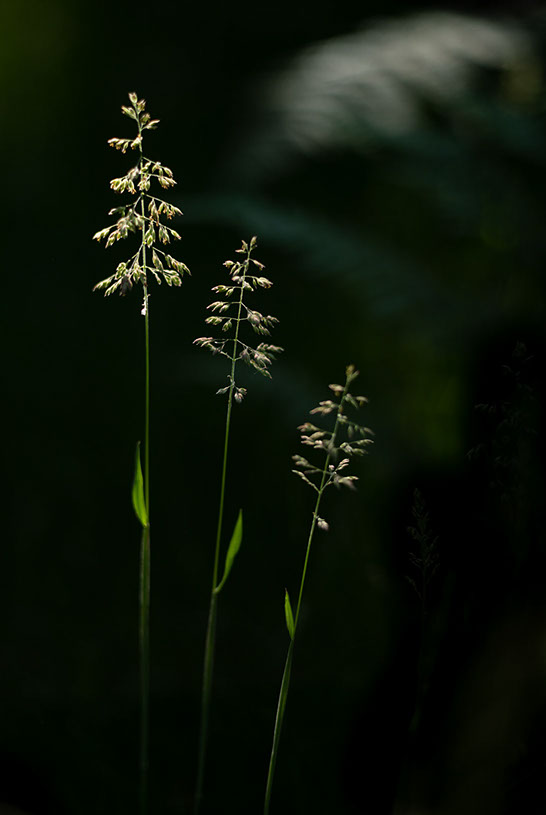Cormorant Fishing on the River Li at Xingping
Leica M9 Monochrom with 75 APO M 1/750 ISO 320 f4
Introduction
I recently wrote about the new 35mm APO Summicron M and before that about the SL Summicron lenses. It occurred to me that I hadn't written about any of the other APO M lenses, and as the 75 has been my favourite M lens for many years, I thought it would be a good idea to rectify the situation.
There are currently 5 such lenses which have all appeared since 1998 (there were several APO R lenses before that, but they were all telephoto designs).
APO Summicron M 90 f2 1998
APO Telyt M 135 f3.4 1998
APO Summicron M 75mm f2 2005
APO Summicron M 50mm f2 2012
APO Summicron M 35mm f2 2021

May the Force be with you (Botallack, Cornwall 2016)
Leica M10 with 50 APO M 1/1000 ISO 100
I bought my 75mm around 2007, shortly after buying my M8 and it's still in frequent use today. I also have the 50mm which I bought on release and am now the proud possessor of the 35mm. Leica were kind enough to loan me the 90 and 135mm lenses for this article.
-crop-u46994.jpg?crc=4143717651)
Fags and Fingers (China 2012)
Leica M9 Monochrom with 75 APO M 1/125 ISO 320 f2.8
APO Lenses
So, what exactly is an APO lens? The truth is that it's rather a vague term and not to be confused with Apochromatic, which isn't vague at all!
Longitudinal Chromatic Aberrations occur when different colours focus at different distances from a lens and cause colour fringing around high contrast edges. An Achromatic lens is one which is corrected to ensure that two wavelengths of light focus in the same plane - an Apochromatic lens is where 3 wavelengths of light focus on the same plane. This is well and good, but it doesn't cover the bokeh, so although it's relevant where an image is completely in focus, it isn't when it's not.

Joel Meyerowitz at the launch of the M10 (Wetzlar 2017)
Leica M10 with 50 APO M 1/90 ISO 400 f2.8
With Leica's APO lenses chromatic aberrations are reduced by the use of low dispersion glass elements in the lens design. The intention is to reduce chromatic aberration in all areas, both in focus and out of focus. As more APO lenses have appeared they have refined the design, so that they have become more and more successful, culminating in the SL summicron lenses and the new 35 APO Summicron M.

Vroom (Young riders in Xingping in 2012)
Leica M9 Monochrom with 75 APO M 1/180 ISO 1250 f4.8


Making a Splash (Glykanera, Crete, September 2009)
Leica M9 with 75 APO M 1/160 ISO 350


Peter Karbe, Leica (Wetzlar 2018)
Leica M10 with 75 APO M 1/350 ISO 200 f2.4
But this is not just about Chromatic aberration, as Peter Karbe explained to me, the lack of aberrations results in much more contrast at the point of focus than in an ordinary lens, and that this contrast falls off very quickly in front and behind the point of focus. This means that an f2 lens can appear to have the same depth of field as an f1.4 lens (or even less in the case of the 75 f1.4 compared to the 75 f2 M lens).

Waiter at the Blue House, Loutro (Crete 2015)
Leica SL with 75 APO M 1/80 ISO 125 f2
I think that this rapid fall-off of contrast confers a special look on the Leica APO lenses, which are very detailed when in focus, but with a quick roll-off into gentle bokeh: Indeed, I think the whole look is 'gentle', the in-focus area, although showing a lot of detail doesn't have that 'crunchy' look that many older lenses have when stopped down.

The Chess Player (Brane, Cornwall 2015)
Leica M (type 240) with 50 APO M 1/90 ISO 400 f2.4
To Summarise
Leica's definition of an APO lens seems to be, quite simply, one which utilises low dispersion glass in construction with the intention of reducing chromatic aberrations, both in focus and out of focus.
Reducing the aberrations increases contrast noticeably when in focus, which has the visual effect of simulating a narrower depth of field, because the contrast drops sharply as focus is lost.
This has allowed them to produce a range of f2 lenses which have the apparent depth of field of faster lenses, this in turn allows the lenses to be smaller and lighter and makes it possible to make them very high quality, they are however extremely difficult to manufacture, which explains why they are so expensive.
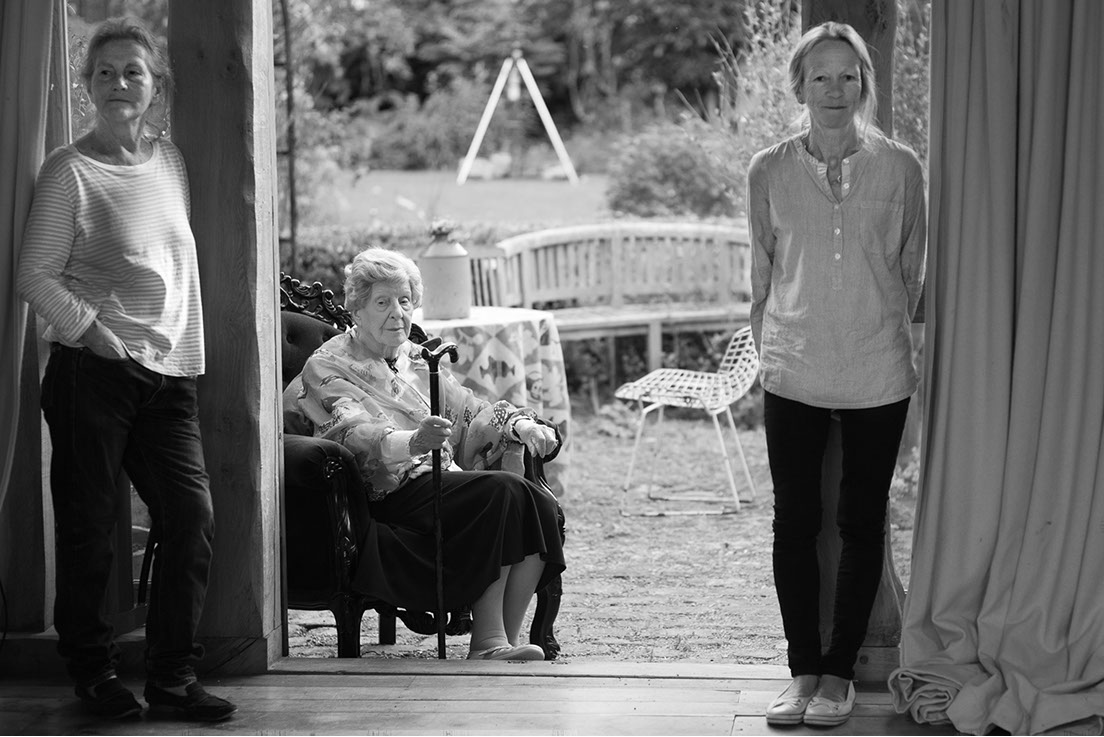
Mary Marjery and Emma (Coltsfoot Barn July 2016)
Leica M10 with 75 APO M 1/60 ISO 640 f2
Focusing
There is quite a lot of information about difficulties focusing the 90 APO on the internet, but nothing about issues with the other APO lenses, even, the 135 APO Telyt.
I was a little surprised by this, and so I thought I’d do some proper testing, not just close up, but at a range of distances. The results were enlightening. Of course it’s possible that there was a specific problem with my 90mm APO, but I don’t think so as I've checked it out with other owners who have similar issues.
For the testing I used my M10-R together with the Visoflex EVF, focusing with the rangefinder and then checking it in the EVF.

The Bride and her Father (Coltsfoot Barn June 2019)
Leica M10 with 50 APO M 1/125 ISO 200 f2
135 mm APO Telyt
This is a long focal length for rangefinder focusing, and the frame lines are correspondingly small, but in actual use I found it’s perfectly possible, even at f3.4. Focusing was straightforward and accurate all the way from the minimum focus distance (1.5 metre) to infinity. Stopping down mostly extends the area in focus beyond the point of accurate focus, but it also extends it towards the camera.

Vickie and Matt Williamson with their 1948 Defender (Middle Fen Cottage, July 2019)
Leica M10 with 50 APO M 1/180 ISO 200 f2.8
90 APO Summicron
This feels like it was designed principally for portraits, it focuses accurately using the rangefinder up to about 4 or 5 metres, even at f2. Stopping down does keep the original focus point in focus, but the in-focus area extends beyond that point, close to the camera remains out of focus.
By 30 metres I found it was back-focusing by 2 or 3 metres. So that when I focused on a car number plate 30 metres away using the rangefinder, and then checked in the EVF, the point of accurate focus was 2 or 3 metres closer.

Helen's Purple Poppy (Middle Fen Cottage, June 2021)
Leica SL2 with 90 APO M 1/5000 ISO 100 f2.4
However, it's worth mentioning in this context that the 90 APO was designed more than 20 years ago, well before the days of digital M cameras and many of the lenses 'out in the wild' are probably quite old, some may have been calibrated to specific cameras (which may have had poorly calibrated rangefinders). It's hardly surprising that they should be out a bit. Probably if one was to buy a new one it would be much closer to correct.
As an interesting historical aside, the first of the 90 APO lenses were manufactured in Canada and around 50 produced. However, making the lens elements proved too challenging and in 1998 it was decided to move production to Solms.
Grass (Redgrave & Lopham Fen, June 2021)
Leica SL2 with 90 APO M 1/500 ISO 100 f2.4
Scarlett and the Green Bucket (Middle Fen Cottage, June 2021)
Leica SL2 with 135 APO M 1/500 ISO 100 f4.8
75, 50 and 35 APO Summicron
These lenses all have a floating element, and as you would expect focusing is accurate and manageable at all distances (and all f stops), with the area in focus extending both forwards and backwards when stopping down.

Keith doing his Marlon Brando impersonation (Dunwich, June 2021)
Leica M10-R with 35 APO M 1/60 ISO 100 f5.6
Image Quality
I've seen a tendency on the internet chatrooms to refer to the modern Leica lenses, and especially the APO lenses as 'clinical' or 'sterile', whereas vintage and older lenses are described as 'artistic'. To me that sounds like it's better to paint a picture with a 50 year old paintbrush! Which doesn't mean for a second that I don't recognise the charm and character of lots of older lenses, but it's a funny old world where 'clinical' = good and 'artistic' = not so good!
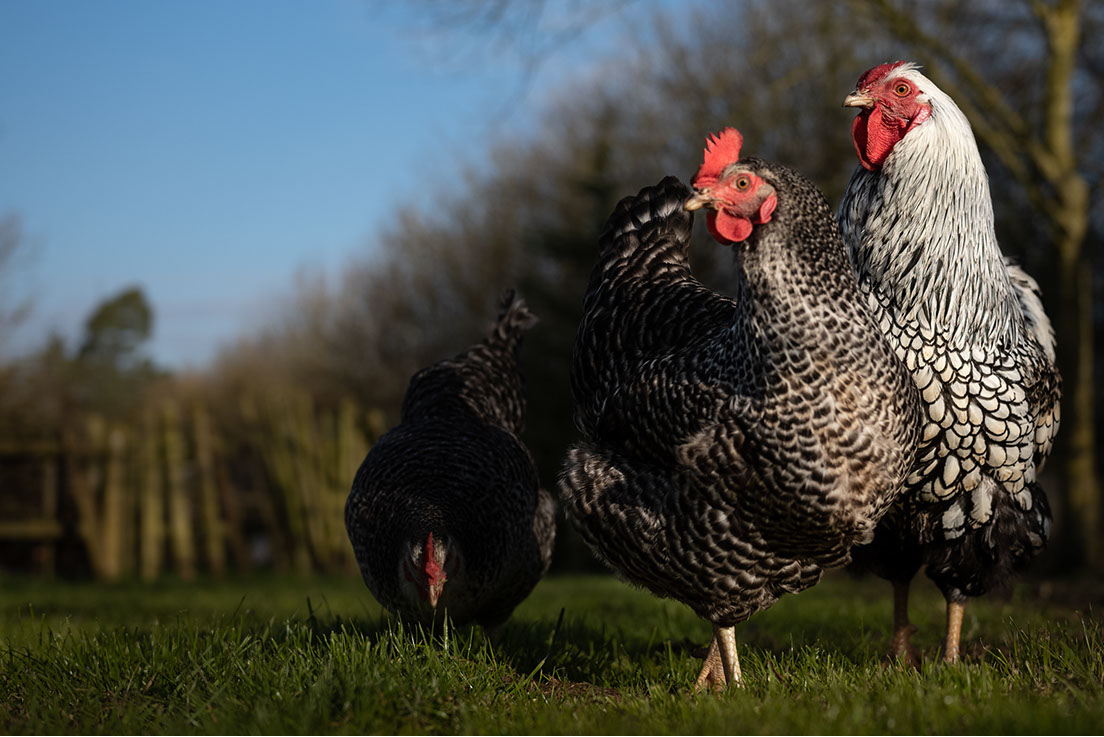
Clint & his Moll; Dotty (Middle Fen Cottage March 2021)
Leica M10-R with 35 APO M 1/4000 ISO 100 f2
The modern APO M lenses are far from lacking character; they have wonderful bokeh, and fantastic detail when in focus, what's more they don't have the 'crunchy' look that many older lenses have when stopped down.
All 5 of these lenses produce wonderful images, right from the widest aperture, there is no need to stop down to improve quality. What's more the drawing of the lens doesn't change when you do stop down.
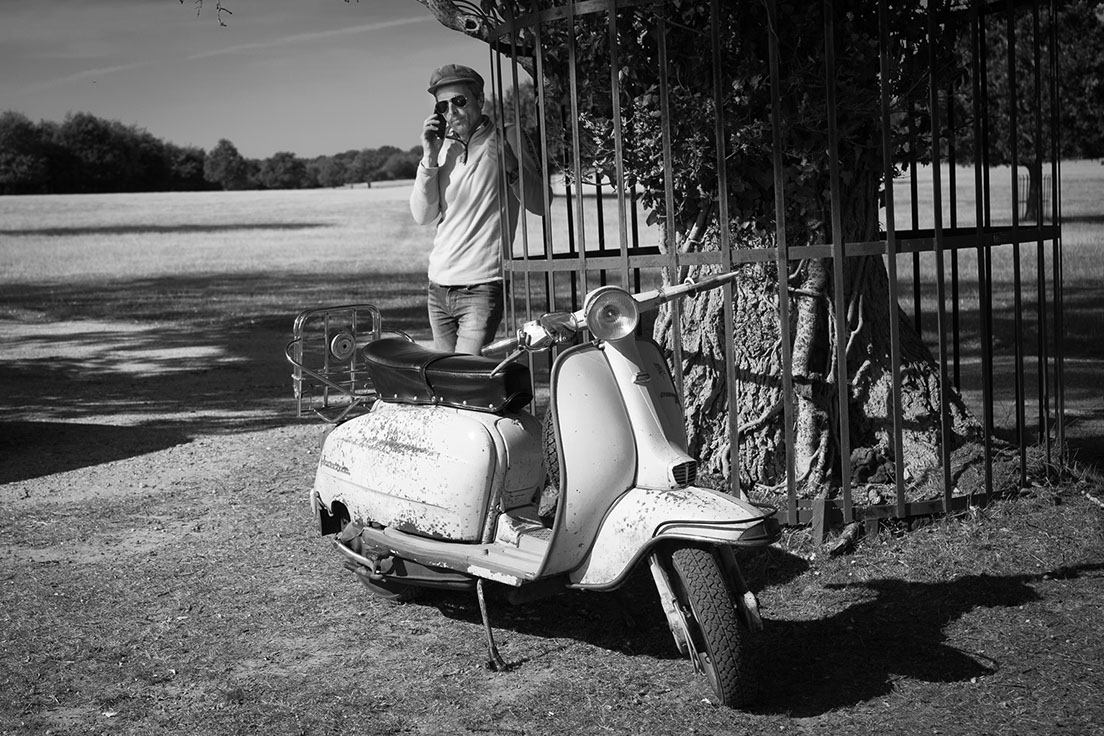
Vespa Man (Gunton Arms September 2020)
Leica M10-R with 35 APO M 1/1000 ISO 100 f2.4
In addition they all work really well on the SL family of cameras, the 90mm in particular is better on the SL (or with an EVF on an M) because of the difficulty in focusing at distance with the rangefinder.
But the important thing for me is that all 5 lenses draw consistently, which means that if you're shooting a wedding or a holiday or just a walk with the dog, then you can swap between different APO M lenses without radically changing the look.

Roo in his Scoobie Doo Van (Middle Fen Cottage May 2020)
Leica M10-R with 50 APO M 1/90 ISO 400 f2.4
Conclusion
Lets face it, in this digital age with very acceptable high ISO fast lenses are not needed for their light gathering properties, and whilst it might be fun to shoot at f1.4, the tiny depth of field makes it a risky undertaking if you're shooting something that matters. Designing and manufacturing extremely fast lenses inevitably requires some compromises and they generally need to be stopped down before reaching peak performance.

Busted! (Cambridge Folk Festival July 2019)
Leica M10-R with 50 APO M 1/250 ISO 100 f2
Even though the Leica APO lenses have a greater depth of field than faster lenses, the rapid contrast fall-off as the lens goes out of focus makes the lens look faster than it is with better bokeh. By giving up on the bragging rights of very fast lenses Leica APO lenses perform perfectly from the widest aperture.

Stop! (Central Italy May 2016)
Leica M10-R with 50 APO M 1/250 ISO 100 f2
All these lenses are fantastic quality, with the 50 and 35 being particularly special. I think they have real character, and what's more it's a character born of modern technical innovation, not one which is a function of out of date design or technical shortcomings.
Whilst most companies are pursuing the goal of faster and faster prime lenses which are growing larger and larger as a result, Leica have quietly brought out a range of smaller higher quality lenses.

Matty (Middle Fen Cottage May 2019)
Leica SL2 with 75 APO M 1/60 ISO 6400 f2
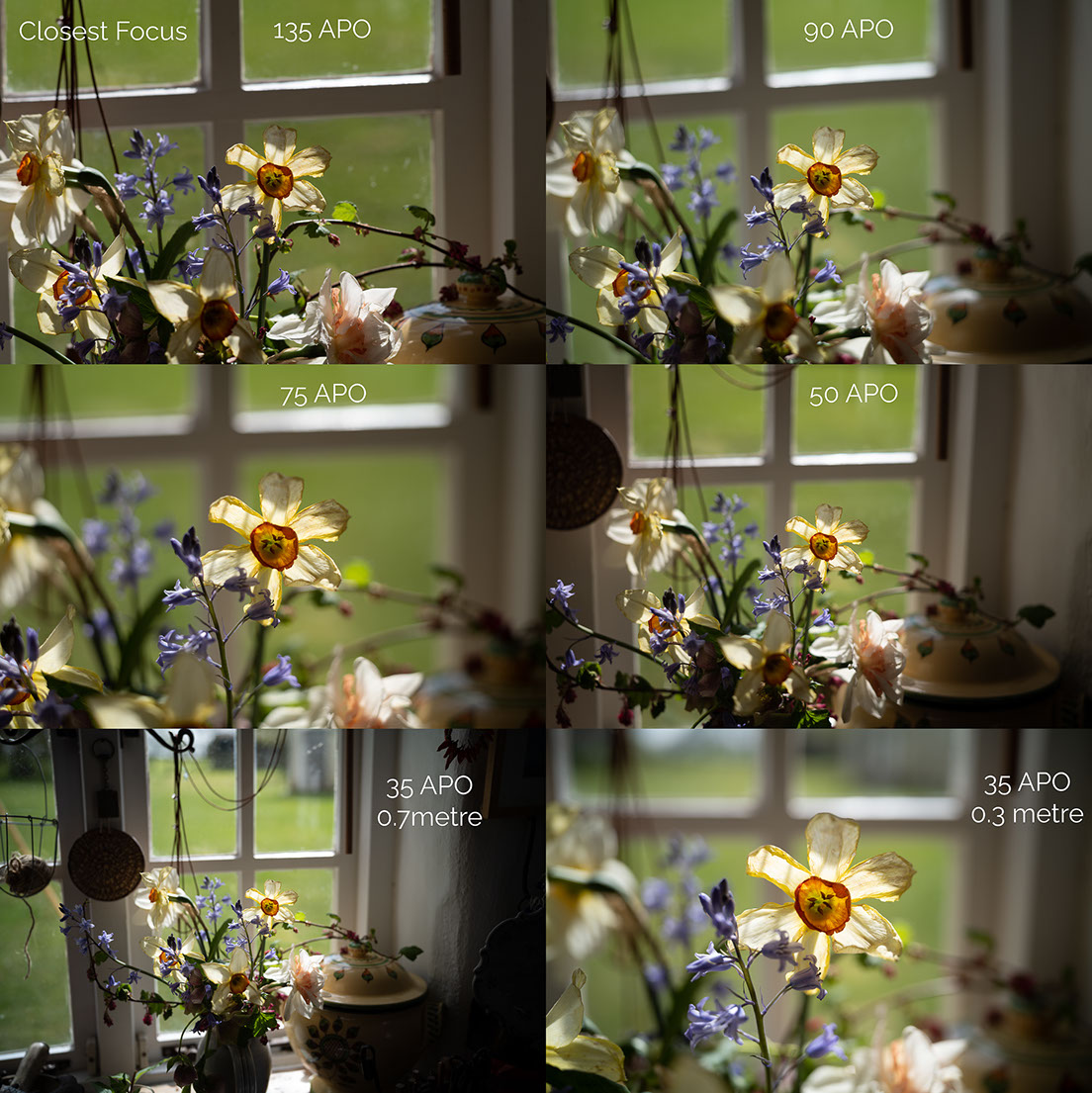
Closest Focus with the various APO M lenses
For the 35 APO I've shown both the rangefinder limit (0.7 metre) and the 0.3 metre needing EVF or Live View
Each image represents the whole of the frame
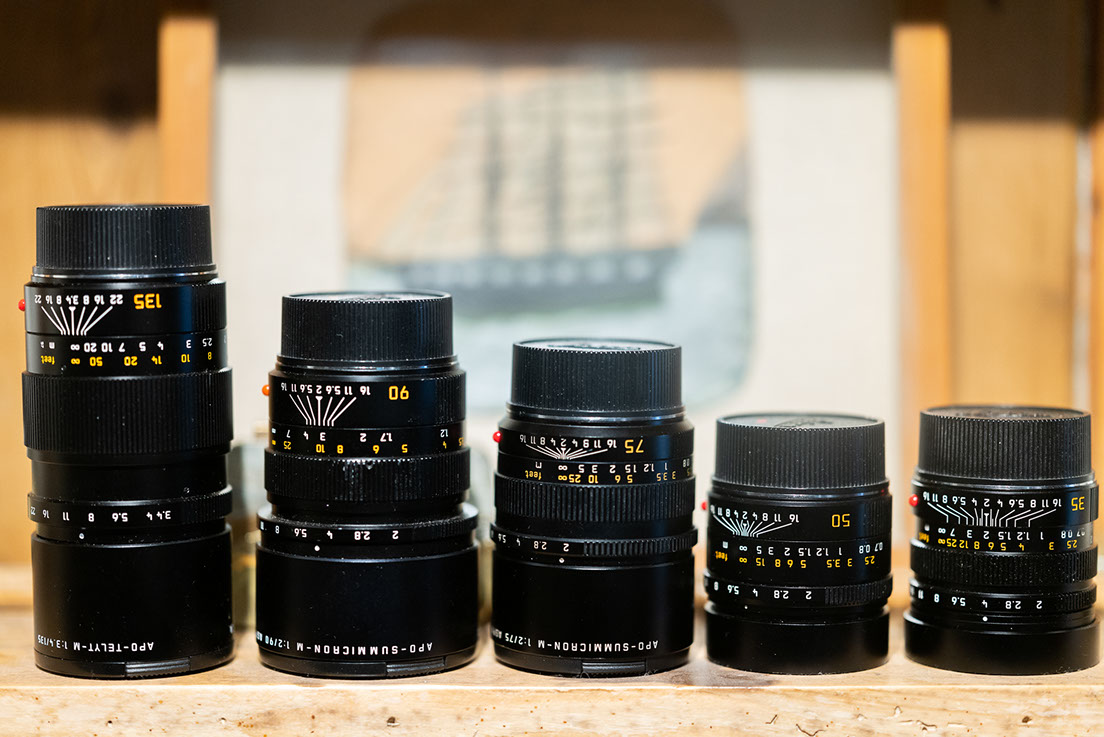
The Lenses (Middle Fen Cottage June 2021)
Leica SL2 with 75 APO Summicron SL 1/160 ISO 1250 f2
For More Photographs Click here

Lust (The Birmingham and Worcester Canal 2021)
Leica M10-R with 35 APO M 1/60 ISO 100 f4.8
Acknowledgements
Peter Karbe for checking an earlier draft of this article.
Jesko von Oeynhausen and Stefan Janssen for useful comments and great communication.
Stefan Daniel for arranging the loan of the 90 and 135 and for all his help and contributions.
Peter Farnz and Andy Piper from the Leica User forum for really helpful discussions about what an APO lens really is (or isn't)!
Thanks also to Fady Salem for encouragement!
Thanks as well to Erwin Rehn, who pointed out that it would be good to have links to higher quality images, so, for the first time you can click on any of the images to get a larger version.
Finally and most of all, to Emma who cooks magical meals and never complains about the time and money I spend on Leica!

Love (The Cambridge Folk Festival 2019)
Leica M10-R with 50 APO M 1/90 ISO 100 f2

Windswept Buddies (Chapel Carn Brae, Cornwall April 2021)
Leica M10-R with 35 APO M 1/500 ISO 100 f4.8 (with self timer)
Bubble Buddies (Middle Fen Cottage September 2020)
Leica M10-R with 35 APO M 1/350 ISO 100 f2
-crop-u46996.jpg?crc=4117706141)
